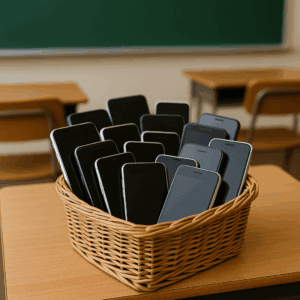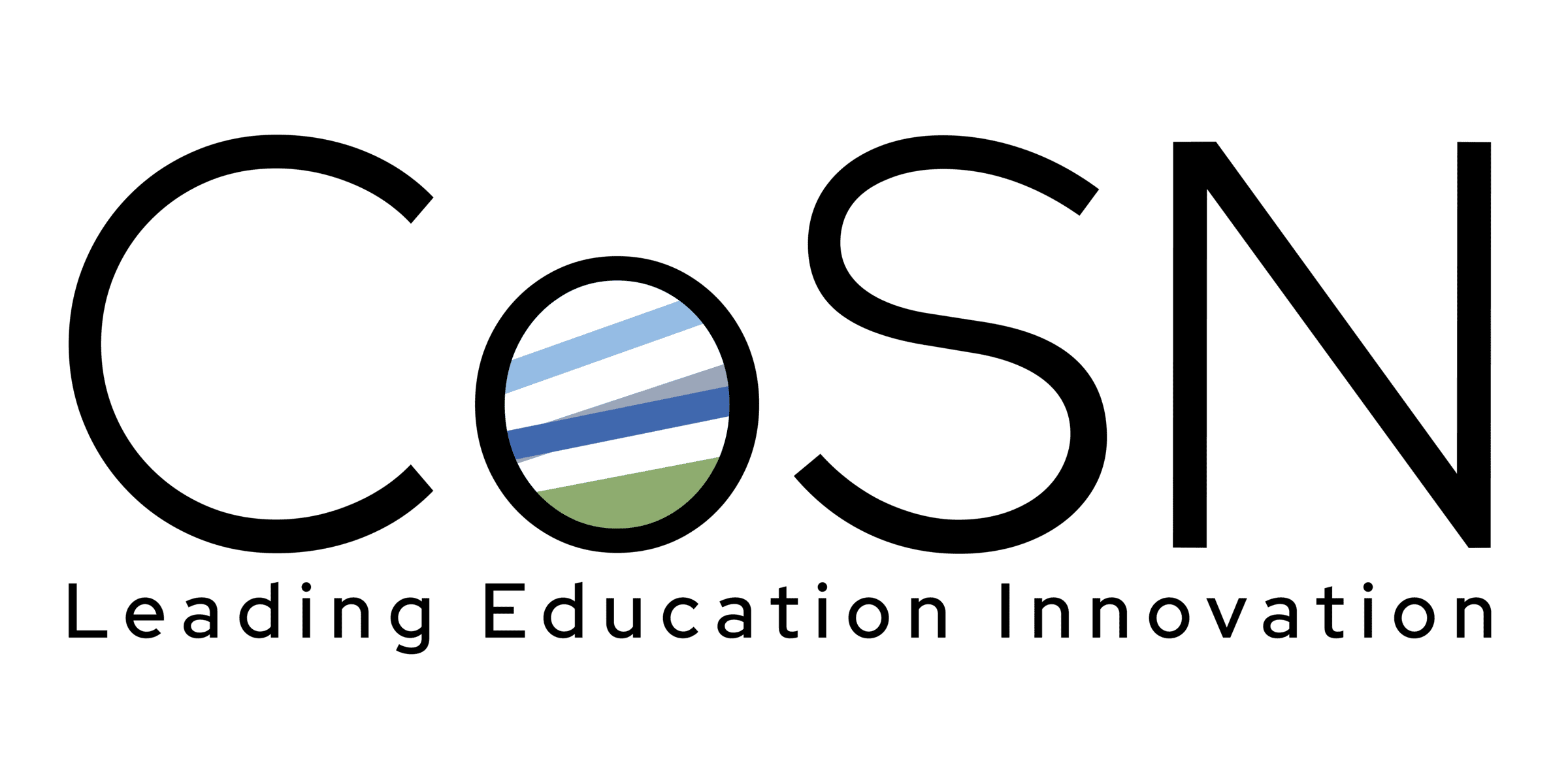This is part of the Connecting Ed Tech Leaders with Cutting-Edge Research Series.
Challenge Success is a national non-profit affiliated with the Stanford Graduate School of Education. Its mission is to increase student well-being, engagement, and belonging by partnering with school communities. Their approach centers on elevating student voice and implementing research-based, equity-centered strategies.
Over the last few years we have had the pleasure of working with several school partners to address the growing concern around cell phones in schools. Using a student-centered process, we have seen positive results with schools who want to develop effective cell phone policies to minimize distractions, enhance student focus, and help them build relationships with teachers and peers. We applaud schools for considering the impact of phones on the student experience, and see this as a prime opportunity to invite students to participate in co-designing these solutions for greater effectiveness and equity.
First, center youth voices in the policymaking process
- Key Action: Conduct surveys and focus groups to understand the student experience with cell phones in their local context and how it relates to their well-being, engagement, and belonging
When we include students in designing solutions and spend time understanding their diverse experiences and perspectives, we create policies that are more likely to be successful and sustained. Leveraging the assets and ideas of the broader community, including teachers and families, is essential for successful school change. Schools can also harness this opportunity to educate families about the impacts of phone use and foster a community response.
This is a prime opportunity to address deeper issues, such as how schools promote connection, ensure meaningful student engagement, and prioritize overall well-being. As we build these policies, let’s think about what’s behind them, such as:
How are we centering connection and belonging in schools?
Are students engaged in meaningful work or simply just ‘doing school’?
What other ways are we prioritizing student well-being?
While there may be a diversity of different cell phone policies across the country, we encourage all schools to leverage this moment to practice bringing students into conversations that have traditionally been led only by adults. Our Listening In Protocols offer helpful ways to solicit authentic opinions from students.
Next, test some small changes
- Key Action: Pilot changes and gather feedback from students and educators
A current partner school that is focusing on cell phone policies this school year is taking a deliberately slow approach to developing a policy. Rather than rolling out a sweeping policy this spring, instead they are using the time to pilot different changes to help build community buy-in and inform their policy creation for next school year.
The team began with the open-ended question, “How might we pilot different practices related to cell phone/social media use to gauge the effectiveness or impact on student well-being, engagement and sense of belonging?” They generated a list of possible changes and then honed in on a few that they want to test this spring. Their initial list of options included:
“Tech-Free Teaching Blocks”— Select specific class periods across different subjects where all phones are collected in a secure charging station at the start of class. Teachers design highly interactive, discussion-based lessons for these periods. Run this for one month, with teachers and students documenting the impact on class participation and retention. Include control groups to compare engagement levels.
“Digital Sunset Program”— For a three-month pilot, implement a gradual evening wind-down where students agree to store phones outside of their bedrooms. Track sleep quality and morning alertness.
“Mindful Lunch Challenge”— Designate two phone-free lunch periods per week where students engage in structured social activities (discussion prompts, group games) or quiet reflection time. Run for six weeks, rotating through different lunch periods to accommodate all students. Set up designated tables for those participating in the challenge.
“Focus Flow Fridays”— One Friday per month becomes a school-wide low-tech day. Classes use paper-based materials, analog tools, and in-person collaboration. Include physical movement breaks between classes instead of typical phone-checking time. Track student and teacher experiences through reflection journals.
“Social Media Swap”— A two-week challenge where students log their social media time for week one, then in week two replace those exact time blocks with alternative activities they pre-select (reading, exercise, creative projects, face-to-face socializing). Include daily group check-ins for accountability and support.

“Productivity Tracking Trial”— A three-week program where students use paper planners to track their daily phone usage and productivity levels. Week one establishes baseline data, week two implements specific phone-limiting strategies, and week three continues strategies while noting changes in productivity. Include weekly small group discussions to share insights.
“Tech-Free Teaching Assistants”— Create a six-week program in which older students serve as tech-free mentors during study halls and free periods, modeling productive work habits and leading phone-free activities. These TAs receive leadership training and help younger students develop alternative study strategies.
“Creative Unplugged Project”— A month-long initiative where students work on creative projects that explore life before smartphones through various mediums (art, writing, drama, music). Include weekly sharing sessions and a final exhibition. Students document changes in their own technology use throughout the project period.
In this model, the team is actively centering student voice in the planning and modification, which will help to mitigate students being surprised by the final policy. They are building in reflection and feedback mechanisms throughout, so that all voices have the chance to be heard. As they pilot, they are also testing enforcement approaches across different settings/age groups, and considering accommodation needs such as IEPs and learning differences so as to not unintentionally disadvantage vulnerable students. The active participation of students, parents, and educators in the process is encouraging, and while we haven’t seen their final policy yet, we are optimistic that they will land on an approach that is appropriate for their community.
Finally, synthesize your learning and reground in your commitment to the whole child
- Key Action: Process and reflect together, considering students’ well-being, engagement, and belonging as you co-create the policy
The final step here is key: don’t lose momentum after the pilots. John Dewey is known to have said that we don’t learn from experience, we learn from reflecting on experience. Students and educators alike will benefit from reviewing the results of the pilots, reflecting on their own experiences, and synthesizing the best next steps as a team. Not only does this make the policy more likely to be effective, it teaches essential skills for students, such as agency, collaboration, self-awareness, and critical thinking.
There will without a doubt be a need to refine the policy once it becomes official. Just as we have to review handbooks annually, we must plan to reflect on our approach to cell phones and adjust as needed. Going into the process with this awareness can also allow us the freedom to be flexible and adapt to the needs of our specific community.
In the end, framing the development of the policy within the larger goal of increasing student well-being, engagement, and belonging opens up opportunities for deeper conversations between students, educators, and parents. Rather than being a contentious topic, the cell phone policy becomes an opening for greater connection within the community, and can be used as a model for other policies such as dress code, homework, etc.
Additional CoSN Resources:
Navigating Student Cell Phone Use in K-12 Schools
Navigating Student Cell Phone Use in Schools: Current Insights for U.S. K-12 Educators & Leaders (Member Exclusive)
AUTHOR: Megan Pacheco, Challenge Success (CA)
Megan Pacheco, M.A., is the Executive Director for Challenge Success. She has more than 20 years of experience helping to transform schools. She has served in a variety of roles, including teacher, school coach, and organizational leader. Prior to joining Challenge Success, she was the Chief Learning Officer for New Tech Network, a national network of schools focused on deeper learning. She is passionate about ensuring all students experience a meaningful, equitable, and inclusive learning environment. Her primary focus has been organizational leadership, school design, project-based learning, continuous improvement, and curriculum and assessment. Megan has a B.S. in Mathematics and an M.A. in Mathematics Education.
Published on: May 13, 2025

CoSN is vendor neutral and does not endorse products or services. Any mention of a specific solution is for contextual purposes.

